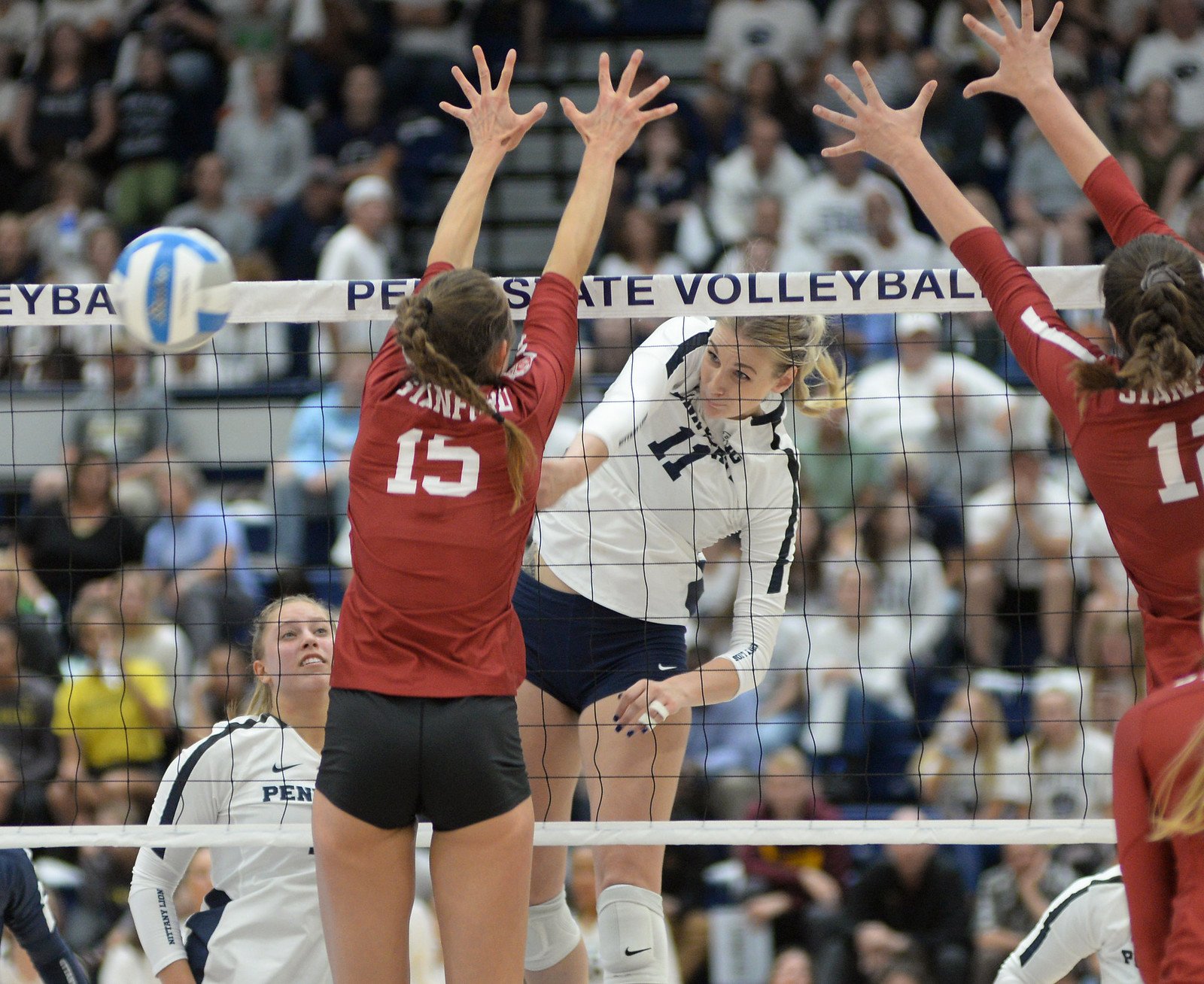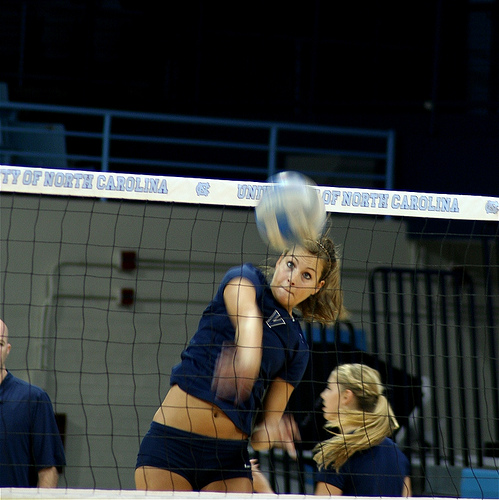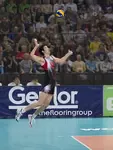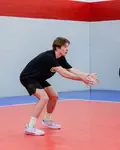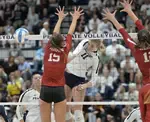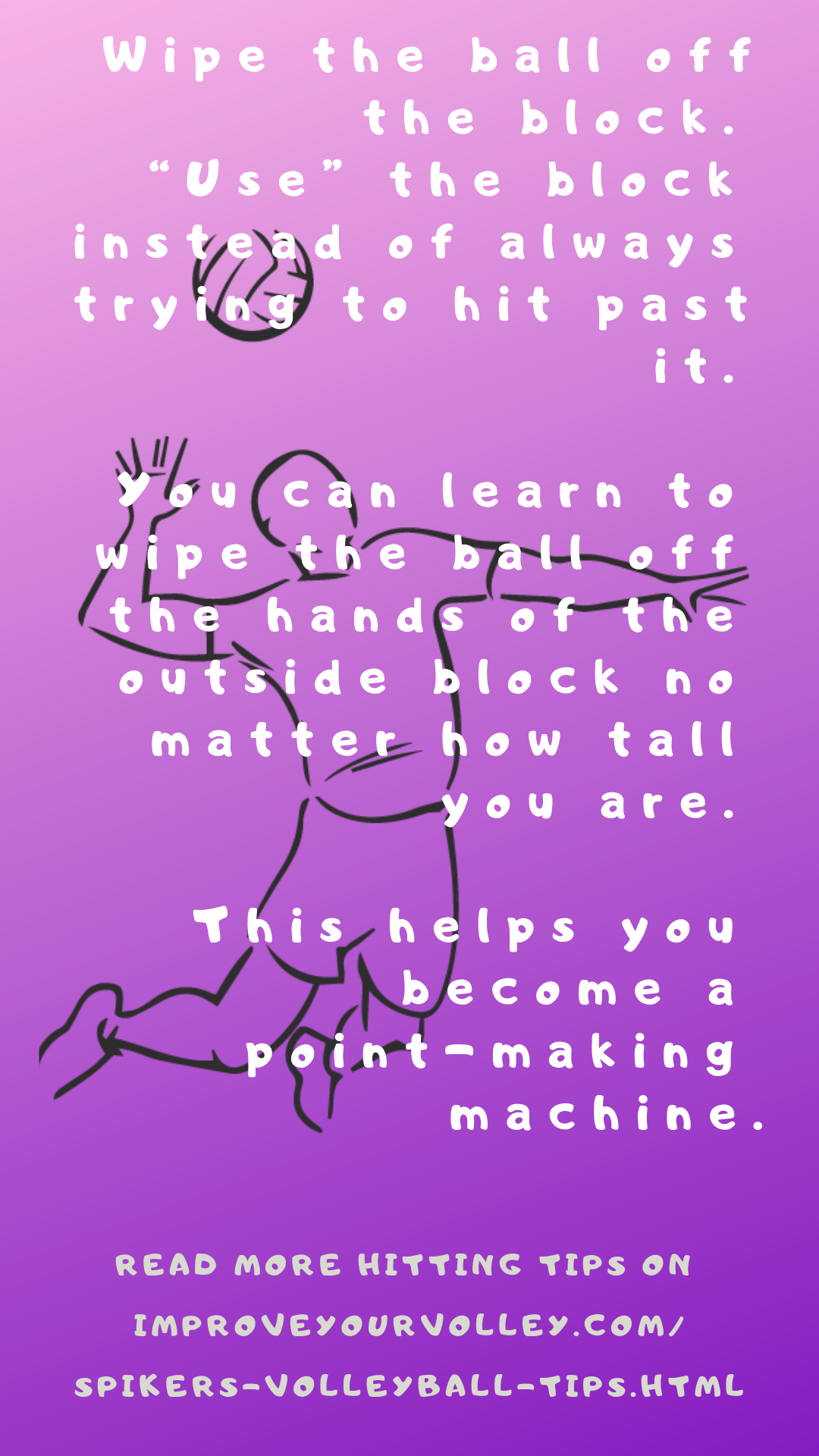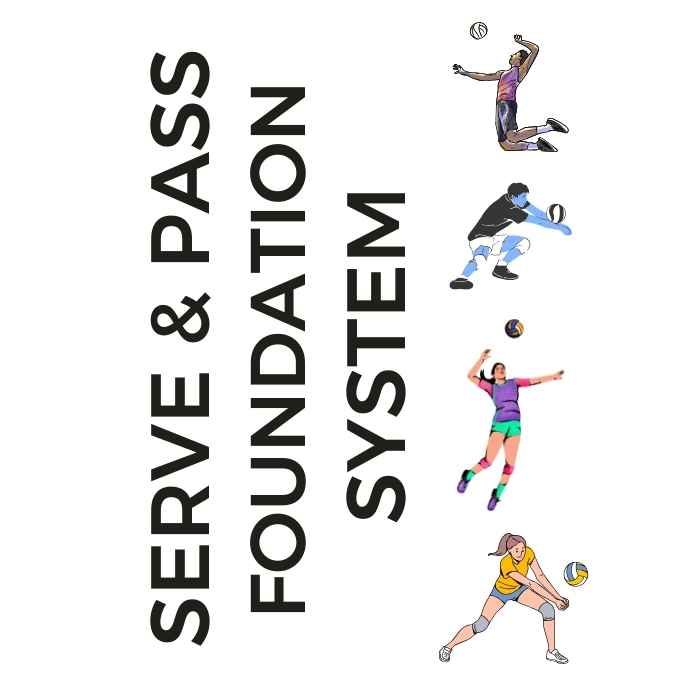
Serve + Pass Foundation System: The Complete Skills Arsenal The two-skill mastery system that transforms inconsistent players into the athletes coaches build their lineups around. Stop Struggling With The Two Most Important Skills In Volleyball!
- Improve Your Volleyball with Coach April
- Basic Volleyball Skills for Beginners
- Volleyball Spike Approach
Volleyball Spike Approach Master The 3 and 4 Step Approach For Hitting
The volleyball spike approach for hitting is also called the spike approach and is done by a spiker who takes 3 or 4 steps to a ball in the air before hitting it.
The spike approach, also known as the volleyball approach, is a technique used by hitters to approach the ball in the air before executing a powerful spike. It can be performed using either a three-step or four-step approach.
The Three-Step Volleyball Spike Approach
The Volleyball Spike Approach - Three Steps
When using a three-step spike approach if you're a right handed hitter you'd step on your left foot first.
Watch as Syd uses her three step spike approach to hit this set.
Step One of the Three Step Volleyball Approach
Step One of the Three Step Volleyball Approach
The directional step is the first of three...
- which you'd use to propel yourself closer to where you want to contact the ball...
- this is your directional step...and
- this should be the slower step you take...
For a quick review...
As a right handed hitter you'd
- step on your left foot first ...
- which you'd use to propel yourself closer to where you want to contact the ball...
- This is your directional step...and this should be the slower step you take..
1. First Step: The Directional Step
Here's how to execute it effectively:
Timing: The directional step is typically taken as the setter is contacting the ball or just after.
Footwork: As a right-handed hitter, your first step will be with your left foot (and vice versa for left-handed hitters). Take a large step diagonally towards the setter, crossing over slightly in front of your other foot.
Positioning: Ensure that your body is facing the setter, aligning your hitting shoulder with the setter's hands. This allows for a smooth and direct transition into the next steps of your approach.
Important Note: The directional step should be controlled and deliberate, focusing on gaining proper positioning rather than speed.
Step Two and Three of the Three Step Volleyball Spike Approach
The last two steps...right foot then left foot occur almost simultaneously...
Outside Hitter Jacob Ceci Swings Hard Against The Blocker's Hand To Score During Volleyball Practice
...and should be
- the fastest,
- most aggressive steps in the entire spike approach
because these are the steps that propel you upward and into the air towards the ball.
Doing this helps you contact the ball at your highest possible contact point above the net.
These steps help you generate upward momentum, launching you into the air towards the ball.
By executing these steps with speed and power, you can reach your highest possible contact point above the net.
2. Second Step: The Power Step
The second step is the power step, which generates explosive speed and power for your approach. Here's what you need to do:
Timing: The power step is taken immediately after the directional step, ensuring a seamless transition.
Footwork: Take a quick and explosive step with your other foot (right foot for right-handed hitters and left foot for left-handed hitters). This step should be a push-off, propelling you forward and generating forward momentum.
Positioning: As you take the power step, slightly open your body to face the ball and align yourself with the setter's contact point. Maintain a low and athletic position, with your knees bent and weight evenly distributed.
Important Note: The power step should be quick and forceful, allowing you to build acceleration and generate power as you move towards the ball.
3. Third Step: The Crossover Step or Final Acceleration Step
The third step is the crossover step, also known as the final acceleration step. This step allows you to further increase your speed, elevation, and positioning for an optimal spike. Here's how to execute it effectively:
Timing: The crossover step should occur immediately after the power step in a fluid and continuous motion.
Footwork: As you complete the power step, quickly cross your back foot (left foot for right-handed hitters and right foot for left-handed hitters) in front of your front foot, generating a quick and powerful lateral movement.
Positioning: As you cross over, your hips and shoulders should be fully facing the net. This helps you align yourself for a strong and accurate spike.
Important Note: The crossover step should be explosive, providing the final burst of speed and elevation. Focus on maintaining a balanced and controlled body position throughout the step.
By breaking down the three-step approach in detail and providing specific instructions for each step, you can enhance your understanding and execution of this important technique.
Remember to practice and refine the timing, footwork, and positioning to optimize your spike approach and unleash powerful and accurate hits on the volleyball court.
The Four-Step Volleyball Spike Approach
In a four step approach,
- once you've made the first two steps of your spike approach that get you closer to the ball,
- you then start your arm swing motion,
- swinging both arms back ..before
- swinging them both forward
As both arms swing forward at the same time the last two steps are taken which lifts you into the air, like a plane that has taken off at the end of the runway.
In the air,
- you pull back the elbow of your hitting arm,
- keeping it above the level of your ear while the arm is above your head.
BYU freshman and three year semi-private training and boot camp class client Kate Prior uses her volleyball spike approach to hit from the outside.
Holding your elbow high and using a bow and arrow type movement to make contact with the ball so that it clears the net, you bring your hitting arm forward so it contacts the top third of the ball.
In the air, focus on maintaining a high elbow position with your hitting arm above the level of your ear.
Utilize a "bow and arrow" type movement to make contact with the ball, ensuring it clears the net.
Bring your hitting arm forward to contact the top third of the ball, generating power and accuracy in your spike.
By mastering the volleyball spike approach and practicing these techniques, you can enhance your hitting skills and become a more effective spiker on the court.
Generating Power in the Approach: Unleash Your Explosive Potential
When it comes to executing a successful spike in volleyball, generating power in your approach is crucial.
The last two steps of the approach play a significant role in harnessing explosive energy, enabling you to jump higher and reach a higher contact point above the net.
Here's why the faster and more aggressive steps are vital for power generation:
1. Increased Upward Momentum
The fast and forceful movements in the last two steps of your approach create an upward momentum that propels you higher into the air.
This upward momentum is what enables you to surpass the net and reach a higher contact point for a more dominant spike.
2. Enhanced Jumping Ability
The explosive power generated by the last two steps of your approach directly impacts your jumping ability.
This generates greater lift, enabling you to jump higher. The higher you can jump, the more advantageous your position will be for attacking the ball and finding gaps in the opposing team's defense.
3. Increased Swing Speed:
As you explode off the ground, the quick and forceful movements translate into a stronger and faster arm swing.
This allows you to generate greater momentum, converting it into a powerful strike that can penetrate the opposing team's defense with force and accuracy.
By emphasizing explosive power in the approach and understanding the importance of fast and aggressive steps, you can amplify your jumping ability and spike effectiveness.
Remember, a well-executed approach with explosive steps not only generates more power but also establishes you as a formidable attacker on the volleyball court.
Do You Follow Me on Instagram?
Follow me on Instagram @coach_apchap to improve your game even faster!
I share alot of individual, partner and easy-to-do volleyball serving drills we do in class with my followers.
Many of these volleyball practice drills you can do at home by yourself or try at your next practice with your teammates.
If you're a B team or JV player trying to make varsity next year...your goal should be to complete 1000 reps a day of at least three of the basic skills on your own...volleyball passing, serving and setting should be at the top of the list.
Volleyball Basics: Where Do you Go From Here?
No need to guess where you need to go now? Here are three options:
- Learn more about Spiking by clicking the related links below.
- Follow the suggested reading on our Sitemap page Learning How To Play (Sitemap)
- Or visit the pages in the How to Play Volleyball section in the drop down menu at the top of the page to get started.
- Before leaving this page Say "Hi" to Mr T.T. MUGB the Lion, wearing the #7 jersey below.
Meet T.T. Mugb, aka "Things That Make U Go Boom"
Lion and Ouside Hitter on VolleyBragSwag's All Beast Team
 Practice and repetition of this technique allow you to fine-tune your timing, strength, and coordination, enabling you to optimize the power generated in your spike approach.
Remember, a well-executed approach with explosive steps not only generates more power but also establishes you as a formidable attacker on the volleyball court.
Practice and repetition of this technique allow you to fine-tune your timing, strength, and coordination, enabling you to optimize the power generated in your spike approach.
Remember, a well-executed approach with explosive steps not only generates more power but also establishes you as a formidable attacker on the volleyball court.If your athlete struggles with consistent serve receive, gets subbed out, or is overlooked for playing time—this is the fix you’ve been looking for.

Struggling with passing consistency?
I help talented passers tired of getting pulled from games because of inconsistent serve receive skills BUILD passing confidence without expensive private lessons using the same 3-step system that's helped dozens of my athletes get recruited.
Download my eBook for $17.99 and start building the passing confidence that keeps you on the court—and gets you seen by college coaches.
From Lady Vol to Legend: Coach April Produces Powerful Passionate Players...is that you?
What Are You Looking For?
Click to Download Your Pre Serving Ritual Mastery Checklist pdf:
🎯Volleyball Pre Serving Ritual Guide -
Players! Learn How To Transform Your Serve from Weak to Weapon
Click to Download Your Parent's Volleyball Serving Checklist pdf
🎯Parent's Volleyball Serving Checklist Guide
Parents! Help Your Player Develop Championship Serves (Even If You've Never Played)

Hi there!
Thanks for stopping by. Hope you learned something today that will help you reach your volleyball goals.
Be sure to subscribe to my email newsletter so you can learn more each week!
Stay strong! Stay motivated!
-Coach April

SUSCRIBE to my email newsletter below!
 Click to learn more about the weekly volleyball classes and clinics or email info@imrpoveyourvolley.com for information
Click to learn more about the weekly volleyball classes and clinics or email info@imrpoveyourvolley.com for informationCongratulations to my seven Boys-18s Vegas Volley club players who played in two state championship finals yesterday, the 3A and 5A State champinship finals at Sunrise Mountain High School.
TOURNAMENT CHAMPIONS!
A-1 Vegas Volley VBC
In It To Win It Tournament
May 2 - 4, 2025 Tournament
Gold Medalists
18s Premier Division
Vegas Volleyball's Unsung Heroes: Celebrating Moms with Peace Love Volleyball Shirts
Ready to energize your volleyball mom journey?
Subscribe to my 'Producing Powerful Passionate Peaceful Players' email list above on ImproveYourVolley.com.
You'll receive energy-boosting tips, exclusive insights from me, Coach April Chapple on maintaining momentum in volleyball.
Let's power up the Vegas volleyball scene together!
Recent Articles
-
5 Essential Serving Tips from Tennessee's #2 Career Aces Record Holder
Dec 09, 25 11:39 PM
I've identified the 5 essential serving tips that separate confident servers from struggling ones and you'll serve with the confidence that creates aces -
The Volleyball Toss How Consistent Is Your Ball Toss Before You Serve?
Dec 07, 25 12:29 AM
The volleyball toss for the overhand serve needs to consistently be two feet up in the air and one foot in front of front foot which puts the ball in front of your serving arm. -
Shop Small: Real Volleyball Training With + Results From A Real Coach
Dec 03, 25 10:30 AM
Support a woman-owned business. Get training from a former elite pro with 13+ years coaching experience. Ditch the big box store--invest in proven results.
